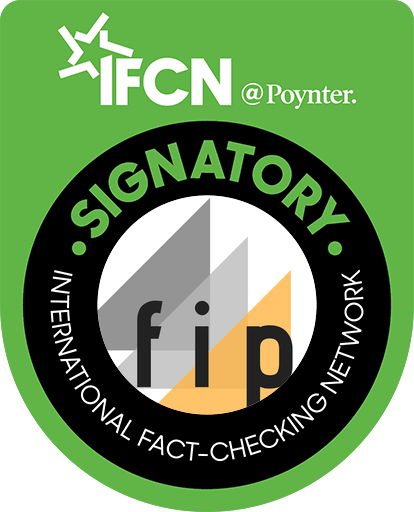On August 29, 21 days after the signing, the Government of the Republic of Armenia published the memorandums of understanding signed between Armenia and the United States. While the political circles in Armenia, including public and political figures, and experts, had been making observations, predictions, and even apocalyptic conclusions for days, it is now possible to react to these statements with evidence based on official documents published.
The Fact Investigation Platform has identified the theses voiced on various platforms, mainly from the opposition, and compared them with the provisions of the memoranda.
Three Armenian-American Memoranda of Understanding
Today, the Government of the Republic of Armenia published the 3 Memoranda of Understanding signed between the Armenian and US Governments in Washington on August 8 regarding:
- AI and Semiconductor Innovation Partnership
- Energy Security Partnership
- the Crossroads of Peace Capacity Building Partnership
It is noteworthy that the Memorandum emphasizes the term “Crossroads of Peace” and nowhere does it mention the so-called “Zangezur Corridor” phrase, which is more common in Azerbaijani discourse.
“Armenia is ceding sovereign control,” “This is capitulation”
The main thesis of the opponents after August 8, when the trilateral declaration and the Armenian-American memoranda were signed in Washington, was the following: “Armenia is ceding sovereign control,” “This is capitulation,” “The corridor was surrendered.” ARF MP Kristine Vardanyan even drew a comparison with the Armenia-Russia-Azerbaijan trilateral statement of November 9, 2020, stating that the Armenian-American document was another capitulation and emphasizing: “The statement of November 9 was better than the one initialed in Washington.”
And former Armenian President Serzh Sargsyan noted that “This document should not be called a peace agreement, but a statement about how the capitulator met Azerbaijan’s regular demands.”
Political commentator Hakob Badalyan highlighted in one of his interviews: “It is a de facto concession of Armenia’s sovereignty,” and another ARF MP Ishkhan Saghatelyan noted: “The authorities are lying that a corridor will not be granted. ” “ It is a fact that Armenia agrees to temporarily or permanently cede control over any part of its sovereign territory, and this is unacceptable,” — this was a statement by former Armenian Foreign Minister Vartan Oskanyan.
In addition, after the signing of the memoranda, the ARF Dashnaktsutyun issued a statement that “…not only do the signed documents not eliminate the Turkish-Azerbaijani blockade and hostile actions against Armenia that have lasted for more than three decades, but Azerbaijan also receives an unimpeded communication-corridor in the sovereign territory of Armenia, creating additional conditions for restrictions on Armenia’s sovereignty and continuing aggression.”
Levon Zurabyan, a representative of the Armenian National Congress party, made far-fetched judgments: “They have arranged it so that the memoranda will not be published. They are hiding them from us.”
Nevertheless, all the documents signed on August 8 are already published.
What does the published official document state? Unlike the above-mentioned statements by the opposition, the “Crossroads of Peace” memorandum emphasizes unequivocal support for Armenia’s sovereignty, territorial integrity, and inviolability of internationally recognized borders, and cooperation concerns customs/border strengthening, capacity building, and infrastructure modernization, not the establishment of an extraterritorial regime.
The memorandum specifically emphasizes: “… unequivocal support for Armenia’s sovereignty, territorial integrity, and the inviolability of its internationally recognized borders, expressing mutual interest in investment in Armenia’s Crossroads of Peace project and enhancing Armenia’s infrastructure and border security.”
It stipulates that the purpose of the Armenian-American memorandum is “… to collaborate towards the improvement of Armenia’s infrastructure and border security, including through investment, resources, training, and partnership between the Republic of Armenia and the United States.”
According to the memorandum, the participants aim to address Armenia’s infrastructure and border security priorities, including by:
- Encouraging private sector investment;
- Increasing efficiency of customs control and border security cooperation and capacity building, including to combat illicit trafficking and smuggling;
- Facilitating the exchanges of best practices between the U.S. Department of Homeland Security and the Armenian Border Guard Troops of the National Security Service and State Revenue Committee.
- Strengthening cyber security best practices and capacities.
The published memorandum stipulates the following areas of cooperation between Armenia and the United States:
- Enhancing Armenia’s border security through training, U.S. government resources, and best practices from U.S. Department of Homeland Security Customs and Border Protection;
- Increasing investment on cyber defense operations; and
- Promoting investment to modernize Armenia’s infrastructure as well as the border security sector.
However, it also emphasizes that the cooperation shall not be limited to these areas.
The published memoranda also refute concerns and claims that “this is a path to a US military presence/base.” There is no mention of a security-military base, force deployment, or defense commitment in any of the memoranda. The published memoranda speak of border security capacities and promoting transportation and infrastructure investments.
The terms
There is no mention of a 99-year lease in the documents. The Memorandum of Understanding comes into force upon the date of its signing and is intended to be valid for a period of 1 year. It is expected that cooperation within its framework will continue for another 3 terms, unless one of the parties (Armenia and the United States) notifies the other in writing of its intention to terminate the cooperation at least 60 days before the termination date.
The 99-year lease was announced by the US Ambassador to Turkey, Reuters also wrote about it, and then US President Donald Trump spoke about it: “Armenia is also creating an exclusive partnership with the United States to develop this corridor, which could last up to 99 years.”
However, in a recent interview about the 99-year term, Armenian Foreign Minister Ararat Mirzoyan responded: “The talk about 99 years has no bearing on reality yet, i.e, there is an agreement on the matters that have been written and published, that is to say the term and any other technical detail still needs to be discussed. The ownership of the land cannot be disputed.”
Thus, the officially published memoranda do not imply a concession of Armenia’s sovereignty or territorial control, and the “corridor” or “capitulation” threats circulated by the opponents are not factually substantiated.
Hasmik Hambardzumyan

 FACTOMETER
FACTOMETER










